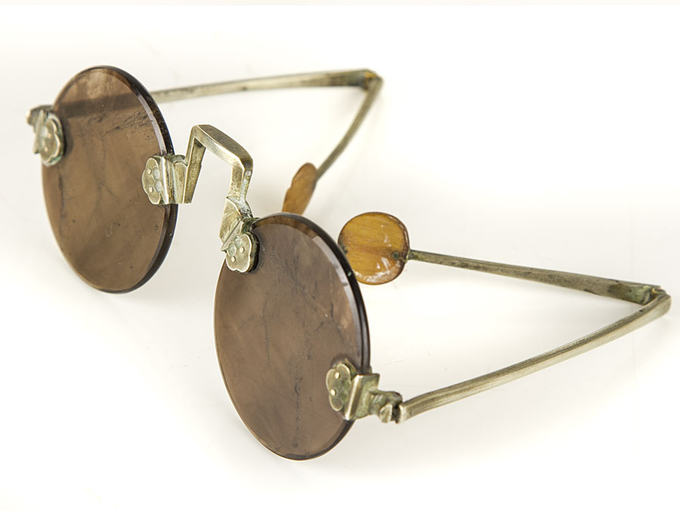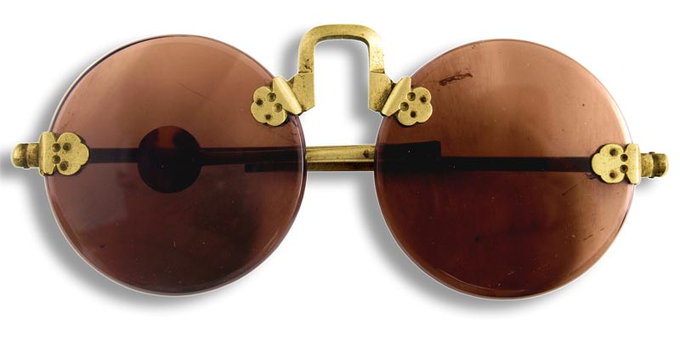20 Facts You Didn't Know 5 Minutes Ago

July 19, 2025
•19 min read
Boost your brain with 20 facts you didn't know 5 minutes ago!
In the age of the internet, an entire goldmine of knowledge is never more than a few clicks away. The problem is that it sometimes seems like there’s just too much out there. How do you decide what’s worth knowing and what will only clog up your brain with useless nonsense? That’s where I come in. From the weird and wonderful to the downright amazing, coming up are 20 facts you didn’t know 5 minutes ago!
Cucumbers Can Cure Bad Breath
Picture this: you have a first date planned at a fancy restaurant, but when you arrive you realize you forgot to bring any breath mints with you, and to make matters worse, you’ve just ordered garlic bread as a side.
Fear not, friend, all you need to do is order a side salad with cucumber! Fibrous vegetables, such as celery and cucumbers, boost your mouth’s saliva production, which washes away odor-causing bacteria and, in turn, cures bad breath! For a simple hack, holding a slice of cucumber between your tongue and the roof of your mouth for about 90 seconds can help to eliminate nasty odors. And if there’s no cucumber on the menu, parsley also has the same odor-neutralizing effect, so, just discreetly chew on your garnish and you should be covered!White Spots On Your Nails
Have you ever glanced down at your fingernails and noticed some bizarre white markings that weren’t there before? This kind of discoloration is actually a common condition known as Leukonychia.
Most of the time it doesn’t signify anything serious, and there are a number of potential causes. The primary reason is as a result of injury to the nailbed, which can occur if you accidentally strike or pinch your nail. Because of the time it takes your fingernails to grow, you might not even recall the injury by the time any white spots show up. Leukonychia can also appear as an allergic reaction to cosmetic products like polish, gloss, hardener or nail polish remover. Sometimes, it can also mean your nails are deficient in certain minerals or vitamins, most commonly zinc or calcium. But unless your entire nail turns white and you experience any pain, these markings will usually go away on their own, so there’s no need to worry!Say “Prunes" For The Camera, Not Cheese
Before you have your photograph taken, you expect to hear the oh-so-familiar phrase “say cheese!”, but back in the day prunes were on the menu instead. In the 1800s, most people weren’t comfortable smiling due to a general lack of good dental hygiene which meant they didn’t have very attractive teeth.

The Flaming-Hot Cheetos Invention
In 2019, Flaming Hot Cheetos were declared America’s favorite snack brand for the third consecutive year. But did you know that the super-addictive snack nearly didn’t exist at all?
Great Message: How a janitor at #FritoLay invented Flamin’ Hot #Cheetos #RichardMontañez went from cleaning toilets to being one of the most respected execs in the food industry. thehustle.co/hot-cheetos-in… #selfdetermination #drive #selfesteem #inventions #belief #FlaminHotCheetos
Why European Chocolate Tastes Different Than American
If there’s one thing Americans and Europeans will always bicker over, it’s chocolate. If you’ve sampled both sides, there’s no denying that choccy tastes totally different across the pond. But why? The simple answer is different regulations.
Firstly, European chocolate is technically creamier because it requires a minimum of at least 14% dry milk solids, while the minimum amount in the U.S. is 12%. Euro chocolate is also slightly richer because it’s required to contain at least 3.5% milk fat compared to the 3.39% needed in the U.S. What’s more, European chocolate is, well, just more chocolatey. That’s because it has also has a higher requirement for cocoa content, which gives bars their deep flavor. But that’s not the only reason why Europeans love to hate American chocolate. Hershey’s also uses a special ingredient that sets it apart from the rest: butyric acid. This ingredient makes the chocolate last longer on shelves but also gives it that “tangy” flavor that many foreigners find off putting. Does that settle the age-old Hershey’s vs. Cadbury debate for you?Dunce Caps: From Symbol Of Smarts To Humiliation
At one point in the Middle Ages, the dunce cap we now associate with idiocy and punishment was actually a symbol of respected scholars. It all began with master philosopher and metaphysical thinker John Duns Scotus, who’s name later lent itself to the phrase “dunce cap”.

The Eiffel Tower Was Almost Built In Spain
The Eiffel tower is one of the first things that comes to mind when someone asks you to think of France, but this world-famous landmark almost ended up in Spain! Civil engineer Gustave Eiffel first pitched the plans for the monument to Barcelona, but the city rejected his ideas thinking it would look like an eyesore.
He was forced to re-pitch the project elsewhere, and the tower found its home in Paris where it served as the main archway for the 1889 International Exposition. Surprisingly, the Parisians didn’t like it much either, one critic even referred to the enormous iron structure as a “metal asparagus”.
Babies Are Born Without Kneecaps
Did you know that a baby’s body has about 300 bones at birth, compared to the 206 bones that adults have? Over time, the process of smaller pieces fusing together reduces the number of bones in the body. One seemingly crucial thing babies aren’t born with is kneecaps.
Instead, babies are born with pieces of cartilage that will eventually become a bony kneecap or patella. Cartilage, which can be found in the nose, ears and joints, is flexible and gives structure where it’s needed in the body. Most children’s kneecaps begin to ossify, that is, turn from cartilage into bone, between the ages of two and six.
There Are Giant Clouds Of Alcohol In Space
Drifting ten thousand light years from Earth in a constellation far, far away is a massive cloud of alcohol. The cloud, which was discovered in 1995 near the constellation Aquila, is 1000 times larger than the diameter of our solar system. What’s more, it contains enough ethyl alcohol to fill 400 trillion trillion pints of beer!
Sadly, the cloud is 58 quadrillion miles away, so an interstellar pub crawl is probably off the cards. What’s more, it contains a cocktail of 32 compounds, and some, like carbon monoxide, hydrogen cyanide and ammonia, aren’t so desirable. Another alcohol cloud, named Sagittarius B2, also holds 10 billion billion billion liters of mostly methanol alcohol, which is used in anti-freeze and windshield-washer fluid.Sagittarius B2 is a giant molecular cloud at the center of the Milky Way, and it's made of alcohol. An ester, ethyl formate is also responsible for the flavour of raspberries, leading some articles to postulate the cloud is smelling of ‘raspberry rum’ buff.ly/3vEXeEa
Your Head Can Boost A Car Key Fob Signal
How many times have you parked your car in a parking lot and walked away only to realize you forgot to lock it. Instead of retracing your steps towards the car until it’s in range, there’s one simple way to reach your car from further away: hold the metal key part of your key fob against your chin, then press the lock button. You might look slightly weird while doing it, but you’ll be grateful when it saves you a few extra steps!

Phone Battery hack
Most modern smartphones are supposed to have a great battery life, but it seems to me like they’re always dying when you need them the most! Thankfully, there’s one super-simple way you can make the most out of your remaining juice.
If, like most people, you carry your smartphone around in your pocket, then part of the problem might be that your pocket is too warm. Cell phone batteries do actually last a bit longer if they’re kept cool. The average 98.6°F body heat of a human being when transmitted through a cloth pocket to a cell phone inside is enough to speed up chemical processes inside the phone’s battery. As a result, it runs down at a faster rate. The simplest way to keep your phone cooler is to carry it inside your bag or on a belt clip instead! And if you ever find yourself away from home without a charger, you can switch off your phone and pop it in the refrigerator to slow the battery losing charge!
What's That White Stuff On Salmon?
Salmon is one of the most popular seafoods in the world. But if you’ve ever prepared the fish yourself then you’ll have probably run into the issue of that white funky stuff that seems to appear when you cook it.
The white albumin on your salmon is the same protein that's in egg whites
Rats Have A Tickle Center In Their Brains
Rats aren’t the most conventionally cute animals, but their reputation as disgusting vermin seems a little harsh, especially when you learn that they’re ticklish! A study conducted in 2016 was able to pinpoint the “tickle center” of the mammalian brain, showing for the first time that stimulating neurons in that particular region can elicit a series of ultrasonic squeaks that are too high to be heard by human ears.
Where Do Lost Socks Go In The Washing Machine?
During a clothes wash, socks seem to creep into the yawning abysses of the laundry drum never to be seen again, but where do they really go? There are actually a couple of explanations for their mysterious disappearance. If you have a top-loader machine, a sock could sneak into the crevice between the inner and outer drums then get snagged in the water drain or pump as a result of overloading the appliance.
Denmark Strait: World's Largest Waterfall Is Underwater
Niagara Falls is pretty big, but it’s far from the biggest waterfall known to man. Some claim Angel Falls in Venezuela is the world’s tallest with a staggering height of 3,212-feet and a plunge of 2,648-feet, but that doesn’t even come close to the truth.
The Denmark Strait is more than three times the height of Angel Falls, and it can be found in the ocean. That’s right, this mammoth waterfall, located near the southern tip of Greenland, begins 2,000-feet under the ocean surface and plunges to a depth of 10,000-feet; a nearly 2-mile drop!
iPhones Have LiDAR Scanners
Apple’s newest sets of iPhones come with a whole array of new features, not to mention a hefty price tag, but there’s one thing that sets the iPhone 12 Pro and Pro Max models apart from their predecessors.
Apple announces depth-sensing LiDAR Scanner on the iPhone 12 Pro #AppleEvent
Inuit Snow Goggles Were The First Sunglasses In History
Sunglasses as we know them today were first invented sometime in 12th century China. The primitive frames were a crude slab of roughly-shaped smoked quartz made to block out the sun.
Lunettes de soleil en quartz, datant du 12ème siècle et fabriquées en Chine. Elles étaient portées par les juges pour ne refléter aucune émotion lors du jugement.
No Fancy Riding In Galesburg
There are plenty of bizarre laws across the states of America, but one particular law in the city of Galesburg, Illinois is a real sucker for cyclists: no fancy riding.

Why Medication Bottles Have Protective Foil Seals Under The Lid?
Ever wondered why pill bottles have protective foil seals beneath the lid? You might assume it’s there to keep the pills airtight, but the real reason is far more morbid. On September 29th, 1982, Mary Kellerman took a Tylenol for a cold. A few hours later, she was dead. That same day, Adam Janus died in exactly the same circumstances.
When his brother and sister-in-law visited and developed headaches, they took Tylenol from the same bottle and both perished with the next two days. In the days that followed, three more people suffered the same mysterious fate.
Supermarket Apples Can Be A Year Old
They say an apple a day keeps the doctor away, but what if that apple has been sitting around for a year? Sounds totally gross, but here’s the catch: most people have eaten a year-old apple at some point.


























